Hard vs Soft Luggage
There are many posts on adventure riding forums and Facebook groups voicing strong opinions favouring either hard luggage or soft luggage in the ultimate debate – hard vs soft luggage.
In some cases, discussions can get quite heated. This reoccurring debate of hard vs soft luggage really has no right or wrong answer, it is more a case of personal preference which is influenced by the style of adventure riding you prefer, the duration of your rides, and how much gear you carry in your luggage.
This hard vs soft luggage article includes valid points raised by adventure riders around the globe, plus my personal experience of over 10 years of riding with both hard luggage, and with soft luggage.
Hard vs Soft Luggage - Weight
Hard luggage weight: generally, hard luggage requires pannier frames and mounting hardware. Combined with the weight of the hard luggage itself, this normally means hard luggage is heavier than soft luggage.
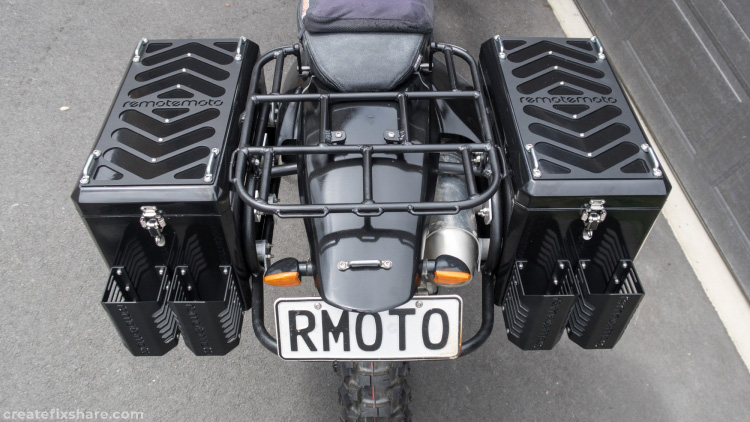
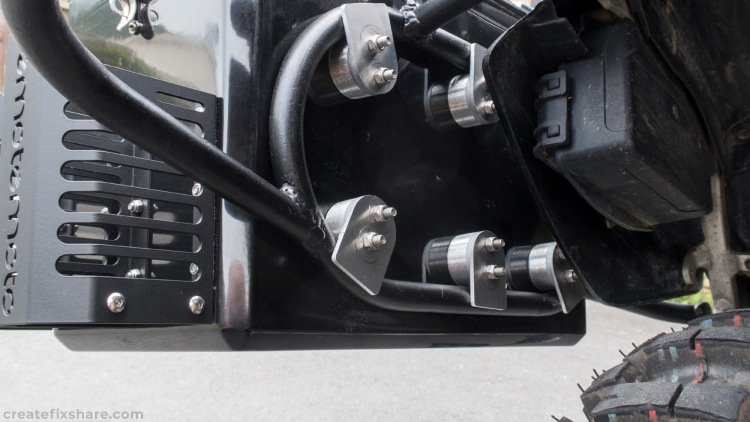
Soft luggage weight: generally, soft luggage is far lighter than hard luggage. While some soft luggage does require metal pannier frames, there are many soft luggage options that mount directly to the bike with straps, and are extremely light when compared to hard luggage. As I write this, adventure bike soft luggage manufacturers seem to be firing out new models left right and center - there has never been so many good options to choose from. Among the many out there, three noteworthy examples of lightweight soft luggage are the Giant Loop Coyote, the AltRider Hemisphere, and the Enduristan Blizzard Saddle Bags.
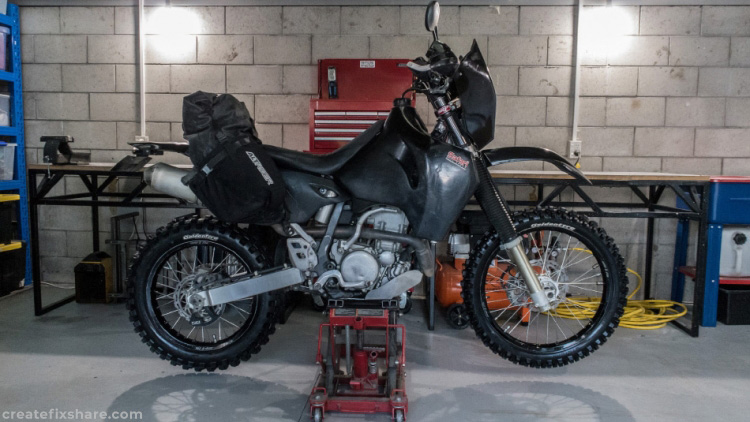
Hard vs Soft Luggage - Packing
Hard luggage packing: hard luggage can be really quick and easy to pack, especially if you get a good packign system in place. For a number of years I used a DRZ400 fitted with hard luggage for riding and fly fishing trips. Everything taken on those trips had its own place within the hard panniers, and slotted into place beautifully. The ease of packing hard luggage is something many adventure riders running hard luggage agree on.
Soft luggage packing: it would be a fair comment that some soft luggage can be cumbersome to pack, especially soft luggage with just one big storage area. I certainly find myself spending more time packing some soft luggage, than others. However, seasoned riders who use soft luggage will say it all comes down to the process of packing, and that soft luggage used with a good packing process, is equally as quick to pack as hard luggage.
Hard vs Soft Luggage - Security
Hard luggage security: generally hard luggage wins over soft luggage regarding leaving your bike unattended such as going into a supermarket to restock food etc. Many hard luggage panniers have the ability to be locked and provide an adequate deterrent to most opportunistic thieves.
Soft luggage security: soft luggage does have vulnerability here. While some soft luggage can have locking systems or large zip eye and loops to allow the use of cable locks, generally the security of soft luggage can be breached with a $2 pocket knife, so it doesn't provide as much security as hard luggage.
Hard vs Soft Luggage - Crashability
Hard luggage durability and crashability: the durability and crashability of hard luggage relates to the panniers as well as the pannier frames. Most aluminium, steel or modern polymer panniers can withstand a decent amount of abuse if good mounting hardware is used. Generally, it takes a serious high speed hit to tear the mounting points out of a pannier.
Normally the weakest link in a hard pannier setup are the pannier frames, especially if they have a small number of mounting points. Being regularly bent back into shape fatigues the metal making failure more likely down the line. In addition to that is the ongoing fatiguing from vibrations, shocks and knocks from riding.
A good example of this is a one month trip I did through the outback of Australia. I built up a DRZ400 specifically for this Australian trip, and build a hard luggage setup exactly the same as the DRZ400 bikes I have ridden over 180,000 km without issue in New Zealand. Due to the thousands of corrugations on the Australian dirt tracks, over the 30 day ride, fatigue cracked the frames on three occasions forcing me to get welding done mid-trip. My riding buddies that used soft luggage had zero issues.
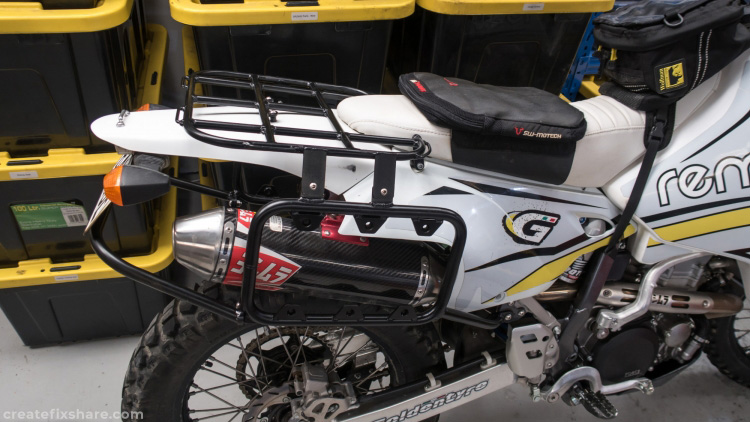
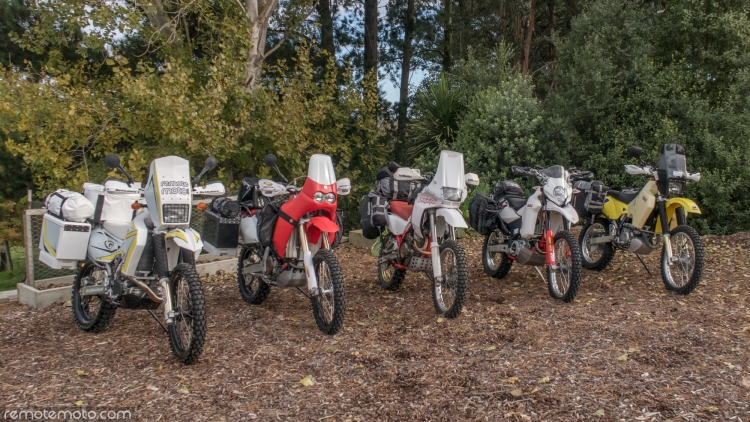
Soft luggage durability and crashability: generally well-constructed soft luggage is very durable and can handle crashes quite well. Of course there is a limit and I have seen soft luggage rip fabric, and tear straps. One of the positives with soft luggage is that it is generally easy to repair on the side of a trail. Cable ties are brilliant for repairing soft luggage and can normally provide an adequate fix to get you back home.
Hard vs Soft Luggage - Waterproofness
Hard luggage waterproofness: some models of hard luggage with good sealing system can be 100% waterproof and can withstand a complete dunking underwater. Many hard panniers, like the ones I use, have a wet-edge system and can stand up to any weather conditions or water crossing you throw at them.
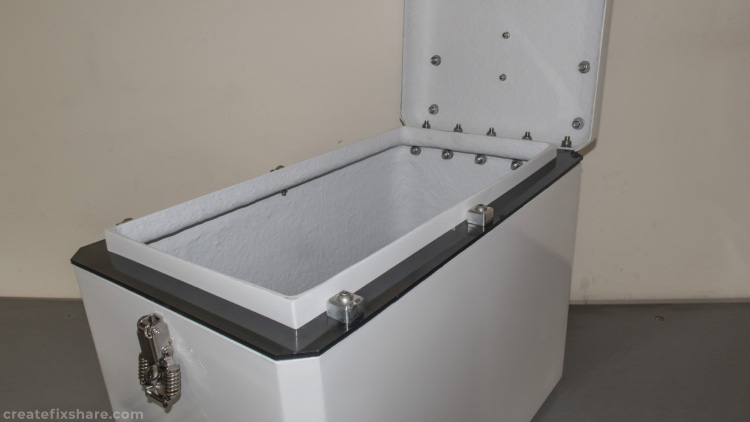
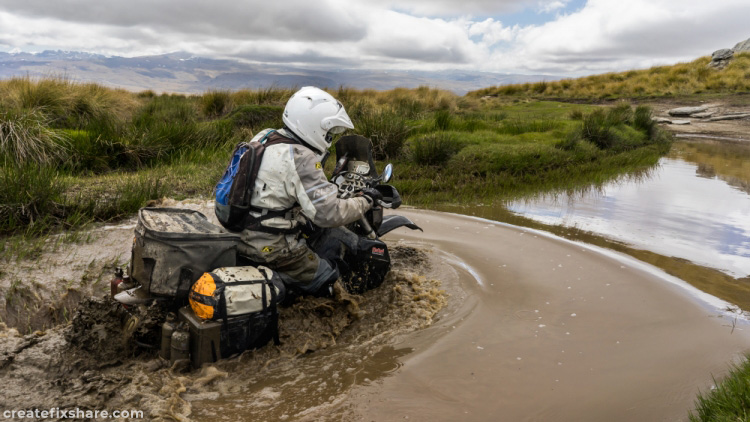
The main issue with hard luggage that is designed to be waterproof, is damaging a pannier and distorting the seal. Aluminium and steel panniers are especially vulnerable to this. It can be quite a challenge to knock panniers back into shape or perform trail side repairs to restore 100% waterproofness.
Soft luggage waterproofness: this generally comes down to the quality of the soft luggage, and also how it is mounted to your bike. I have used soft luggage saddlebag panniers which have had insufficient mounting so they moved around when riding and rubbed. This ended up wearing holes into the saddlebag panniers allowing water to come in when it rained or when I crossed a river.
Soft luggage with good mounting will reduce or eliminate rubbing and allow the soft luggage to remain waterproof. The AltRider Hemisphere soft luggage proved to be waterproof after serious use and abuse on numerous High Country adventure rides. There are a number of other soft luggage options with secure mounting systems, worthy of a mention is the Mosko Moto Reckless series which mounts up firmly to the bike.
Hard vs Soft Luggage - Mounting/Dismounting
Hard luggage mounting and dismounting: if you are taking all your gear into a hotel or stripping your bike down for a day ride, the ease of mounting and dismounting hard luggage depends entirely on the mounting hardware. Some hard luggage mounting has a quick release system which can be as simple as the turn of a knob or the pull of a lever. However some hard luggage mounting can be quite labour intensive and will require tools.
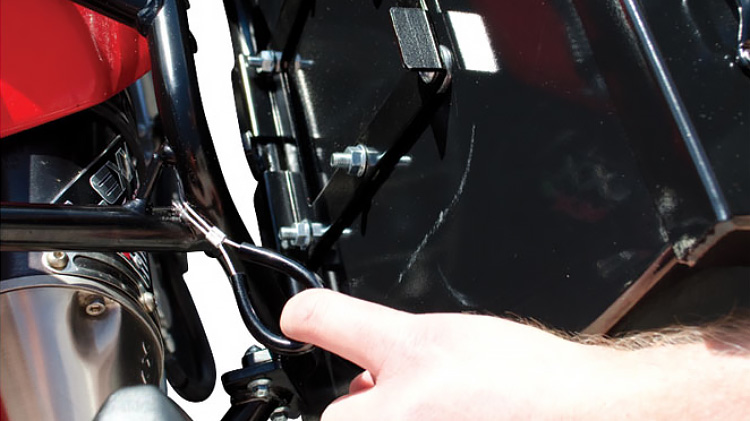
It is worth noting that some of the quick release mounting systems on hard panniers can be very user-friendly, however they are more vulnerable in a drop or crash. Quick release mounting systems can be difficult to repair on the side of a trail.
Soft luggage mounting and dismounting: generally good quality soft luggage offers a very quick method to mount and dismount.
Hard vs Soft Luggage - Access to your gear
Hard luggage access: probably one of the things I like about hard luggage is the fact you can flip a latch and access contents quickly and easily.
Soft luggage access: some soft luggage systems that are compartmentalised can be fairly convenient to access your gear, however some of the more basic single compartment loop style bags can mean accessing gear throughout the day is a real pain.
This really comes down to the design of the soft luggage. On one of my first soft luggage setups I used multiple WolfMan duffle bags and saddle bags. Collectively, the number of straps, buckles and clips meant that accessing gear was really time-consuming. This was the primary reason I moved away from WolfMan gear.
It is worth noting that the WolfMan line is really good quality gear. While I no longer use the duffle bags or pannier bags, I still use some of their other gear including the WolfMan tank bag and the WolfMan rollie bags.
Hard vs Soft Luggage - Protection of your gear
Hard luggage protection: it would be a fair comment that hard luggage provides more protection for your gear than soft luggage in a drop or crash. When using hard panniers in technical terrain and dropping the bike, I've always arrived at camp with all my contents safe and sound.
Soft luggage protection: while some soft luggage will do a better job than others, generally soft luggage doesn't do a great job of protecting your gear in a drop or crash. This can prove costly if you are carrying around expensive kit. This is unavoidable and simply the price you pay for the weight savings of soft luggage.
One story that pops into mind is a trip into the High Country of New Zealand using soft luggage. Not long into the ride I got a flat tyre. With nothing around to prop the bike up on and lift the wheel, I simply laid the bike over to remove the wheel; as I have done many many times before. As gentle as I was laying the bike over, when I reached camp and unpacked, I found that my brand-new aluminium frying pan was bent and mangled plus I had inadvertently murdered some perfectly innocent bananas!
This is more of a user related issue than a soft luggage related issue. If you are dealing with a flat tyre, where there is nothing to prop your bike up on, then a trail stand should really be carried, and this will avoid any damage to gear inside the soft luggage.
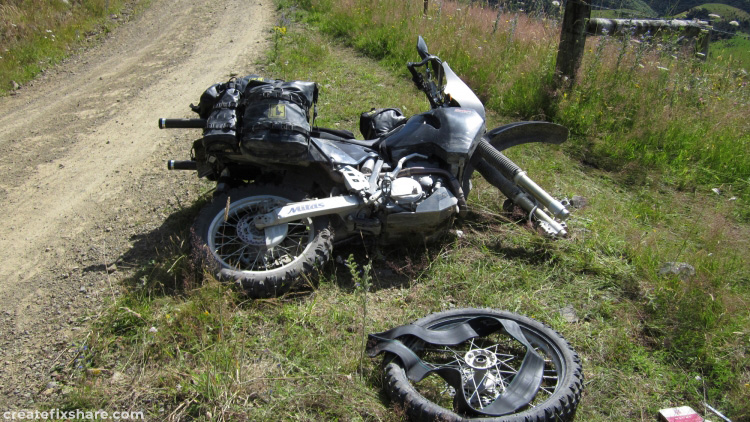
Hard panniers on the other hand not only provide excellent protection for your gear, when lying the bike over, the rear wheel is propped up making it very easy to remove and refit the rear wheel.
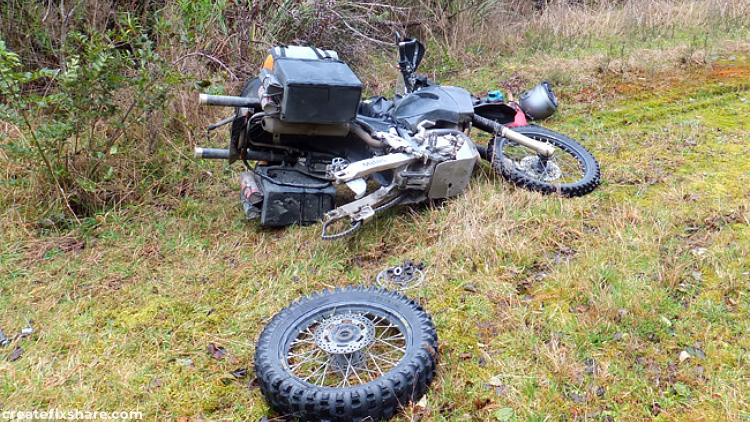
Hard vs Soft Luggage - Cost
Hard luggage cost: typically hard luggage panniers plus the pannier frames required for mounting makes hard luggage reasonably expensive. However, companies such as Tusk now produce very affordable hard pannier and rack systems. The costs can vary greatly from the top end options such as Touratech, through to the economy options such as Tusk Panniers.
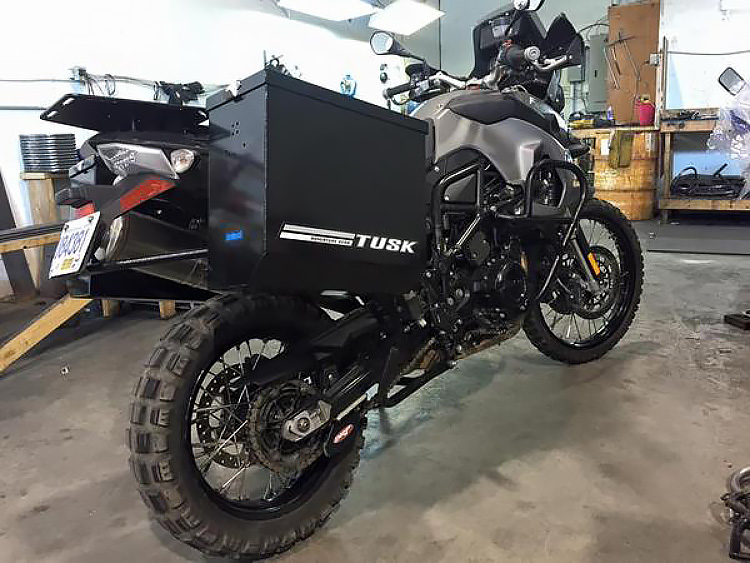
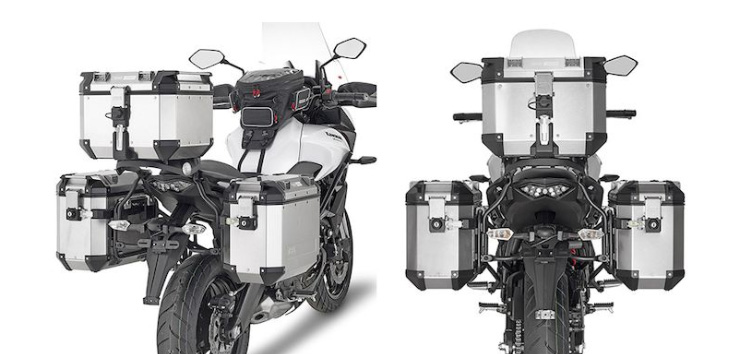
Soft luggage cost: just like hard luggage, soft luggage can vary in price also. The variance in price normally relates to quality, durability and extra features. At one end there are companies that offer cheap soft luggage panniers for under $200. At the other end, there are companies that offer well thought-out and durable soft luggage systems for $800 and up.
I have seen a lot of riders use cheap luggage. While this is easier on your wallet at the start, in the long run, it will actually cost you more. Cheap luggage is made from cheap materials, so it will never last as long as good quality luggage. Not only can cheap luggage start to fall apart within just a few trips, it can fail entirely leaving you on the side of a trail with collapsed luggage - a sure-fire way to ruin a good trip. Where possible, spend as much as you can to get the best quality you can – you will never regret this.
In the soft luggage market, three manufacturers that produce good quality, dependable luggage, in the mid to high price bracket are Giant Loop, AltRider and Endurostan.
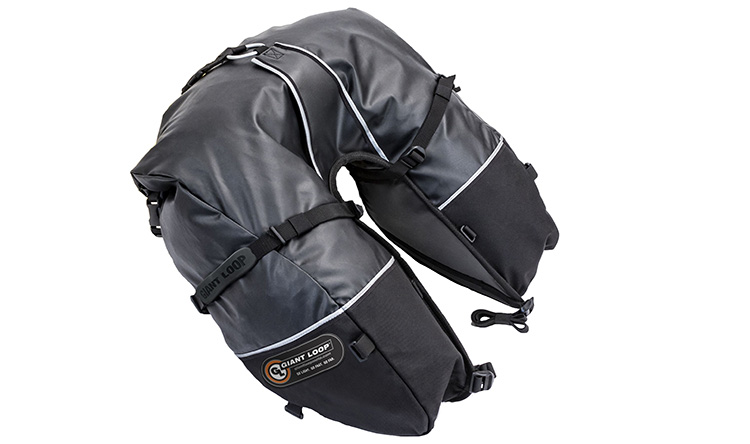
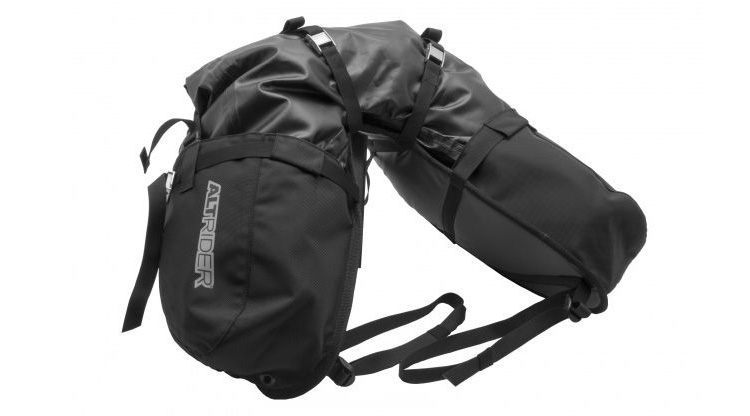
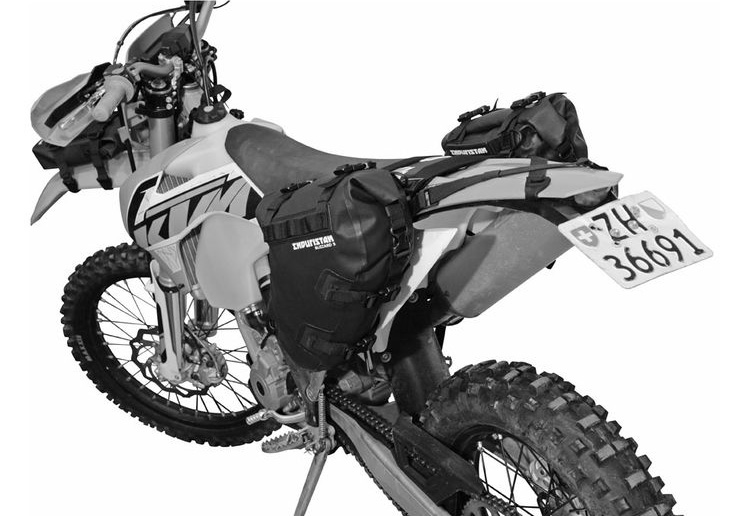
Hard vs Soft Luggage - Off-Road Practicality
Hard luggage practicality: generally hard luggage isn't used as much in the technical off-road terrain, especially tight single trails. Hard panniers often stick out much wider than soft luggage meaning they can catch on obstacles such as banks or tree branches and kick you off the bike. Additionally deep ruts can have you wedging and hanging your rear wheel.
This doesn't mean hard panniers aren't capable of technical off-road riding, I've taken hard luggage bikes through tight goat trails and a variety of other technical terrain. It simply means you need to be more spatially aware of your panniers when riding off-road in tight terrain.
Soft luggage practicality: because soft luggage is normally much narrower than hard luggage it is generally more user-friendly in the technical off-road terrain. This is why you will see most of the hardcore off-road riders running soft luggage. While soft luggage does mean your gear is more vulnerable if you strike a bank, tree branch etc, it will generally slide around obstacles far easier than hard luggage.
Hard vs Soft Luggage - Appearance
Hard luggage appearance: some of the top end hard panniers do look quite sharp while some of the basic aluminium boxes can look very agricultural. Certain bikes lend themselves to suiting hard luggage more than others.
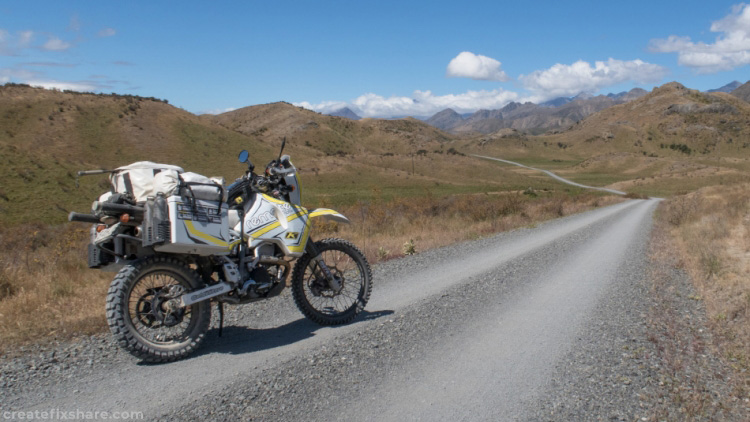
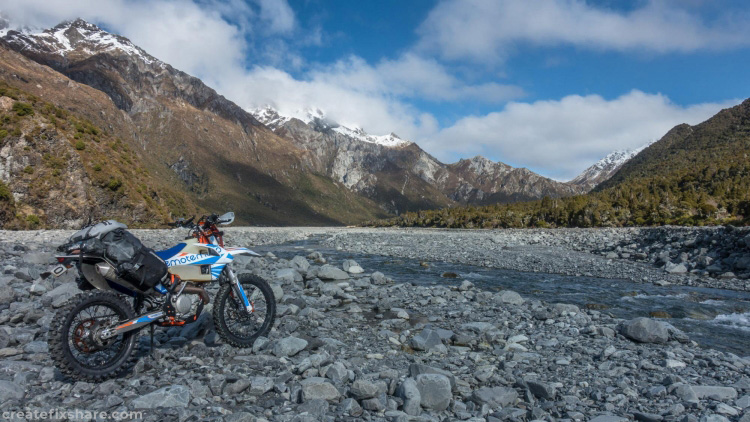
Hard vs Soft Luggage - Capacity
Hard luggage capacity: for round the world travellers, hard luggage is often selected due to its ability to carry large loads. Not only can hard panniers have large capacity, they commonly have items straped to the top and mounted to the sides or bottom. This allows the capacity to be significantly increased.
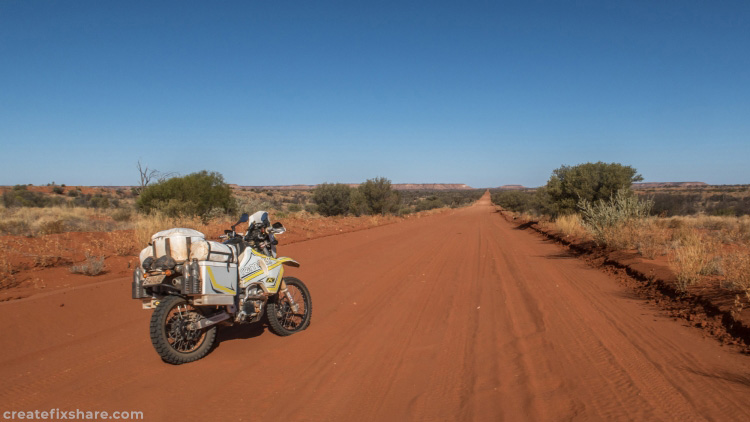
Soft luggage capacity: while the majority of soft luggage is normally around the 30 to 60 litre mark and ideally suited for shorter trips, there are a growing number of options up to 80 litres or more, offering flexibility for longer trips where extra gear is required. Additionally, extra luggage/dry bags can be strapped to some soft luggage systems.
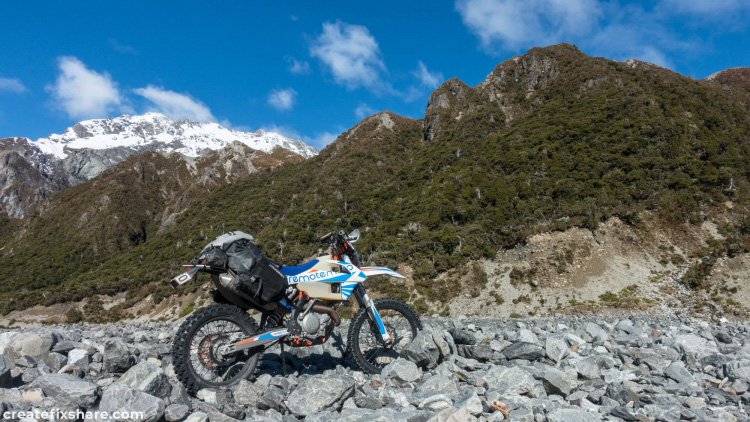
Hard vs Soft Luggage - Safety
Hard luggage safety: one of the most common complaints about hard luggage is that it is dangerous in a crash or can catch your foot or leg and cause injury. This opens a can of worms debate that is generally influenced by three topics:
#1 Panniers with sharp or pointy edges - Many of the top end hard panniers have rounded corners or plastic covers to avoid having sharp or pointy edges. Some of the cheaper hard panniers or home-made panniers folded from sheet metal can have very pointy edges that can increase the chances of injuring a rider.
#2 Improper mounting - Hard panniers that are mounted too low on the bike can have the benefit of lowering your centre of gravity, however it does not give your legs enough room and increases the chance of you catching your foot or leg. Mounting hard panniers higher up on the bike will give your legs and feet adequate clearance and is the best way to avoid injury.
#3 Rider technique – In most instances where riders injure themselves using hard luggage, it is caused by dabbing a foot in the middle of a sketchy moment. The foot or leg is then struck by the pannier and can cause injury. Experienced riders that use hard luggage avoid dabbing the foot when possible, instead they stay on the pegs and use rider skills to correct a sketchy moment. If dabbing the foot is unavoidable, an experienced rider will normally do this without catching their foot on the pannier. Generally, an experienced rider will avoid injury when using hard panniers.
When it comes to a crash and the bike lands on top of you, it could be a fair comment that rigid hard luggage can cause injury easier than soft luggage. Again, a huge contributor to avoiding injury is rider experience. Experienced riders that know how to handle a crash will normally avoid injury by keeping their body out of harm's way.
Soft luggage safety: soft luggage is generally mounted higher on the bike than hard luggage and often doesn't stick out as far which reduces the chance of a rider catching their leg. It would be a fair comment that soft luggage generally poses less risk of injury than hard luggage when it comes to a crash.
While I agree that soft luggage is the safer of the two, the only time I've ever had an injury relating to luggage, it was from soft luggage. The injury happened when I was riding a New Zealand High Country trail at a reasonable pace, came over a crest and dropped into an obscured deep rut. My left foot caught the side of the rut and with lightning speed it was torn off the foot peg and slammed against my soft luggage. The resulting injury was a torn ligament in my knee that required a number of weeks to fully recover. This injury would have occurred with hard luggage or soft luggage, however it is worth noting I have ridden over 180,000 km on a bike with hard luggage, and not once have I injured myself.
Hard vs Soft Luggage - Closing Summary
The majority of my earlier adventure riding was on bikes with hard luggage. It served it purpose well and helped me to enjoy thousands of kilometres of amazing adventure riding and exploring. Hard luggage has many pros and is an excellent option for many adventure riders around the globe. However, as I write this article, I now only have adventure bikes with soft luggage. The main reason is, most of my adventure riding involves technical trails that are often tight and challenging. In these riding conditions, compact, nimble, and lightweight soft luggage is more ideal.
While there are no strict rules to choosing between hard luggage and soft luggage, running through a process of elimination based on your bike, your riding style, and your luggage capacity, will soon reveal the ideal setup for you. Happy trails!